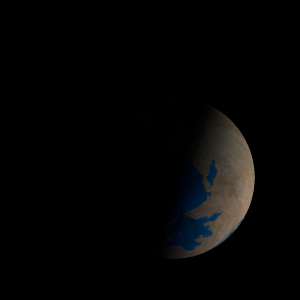|
|
Space Astro
|
Info for exoplanet "Chertyao"
| Scientific (actual) data |
|---|
| Name | Kepler-263 b |
| Planet status | Confirmed |
| Radius | 0.238 |
| Orbital period | 16.5681 |
| Semi major axis | 0.12 |
| Discovered | 2014 |
| Updated | 2021-02-05 |
| Tconj | 2454980 |
| Impact parameter | 0.08 |
| Publication | Announced on a website |
| Detection type | Primary Transit |
| Alternate names | 2MASS J19295274+3734040 b, K00999.01, KIC 2165002 b, KOI-999 b, KOI-999.01, WISE J192952.76+373404.1 b |
| Star name | Kepler-263 |
| Right ascension | 292.47° |
| Declination | 37.57° |
| Mag j | 13.994 |
| Mag h | 13.531 |
| Mag k | 13.548 |
| Star distance | 771.09 |
| Star metallicity | -0.11 |
| Star radius | 0.79 |
| Star temperature | 5265 |
| Star alternate names | 2MASS J19295274+3734040, KIC 2165002, KOI-999, WISE J192952.76+373404.1 |
| Wikipedia article | Kepler-263 b |
Back
| |
| Fictional info (?) |
|---|
| Suggested name | Chertyao |
| Planet type | Terrestrial |
| The two polar ice caps appear to be made largely of methane ice.
Planet is crowded with aggressive stone-age oceanic creatures, the "Dench", which feed in the mountains by killing the somewhat smaller "Yongt Engla". Dench are not related to the Aokyojyang't and have 9 tentacles and vary in length from 9 to 11 cm. They can thrive at temperatures from -100 to -70°C and extreme gravity which is common on Chertyao. |
| Estimated population | 3.0E-5 |
| Atmosphere | Carbon dioxide | 66% |
| Oxygen | 27% |
| Methane | 3.5% |
| Water | 2.4% |
| Atmospheric pressure | 0.006 bar |
 |
| No known satellites |
| Google search for Chertyao |
|
Website by Joachim Michaelis
|
|
|
|